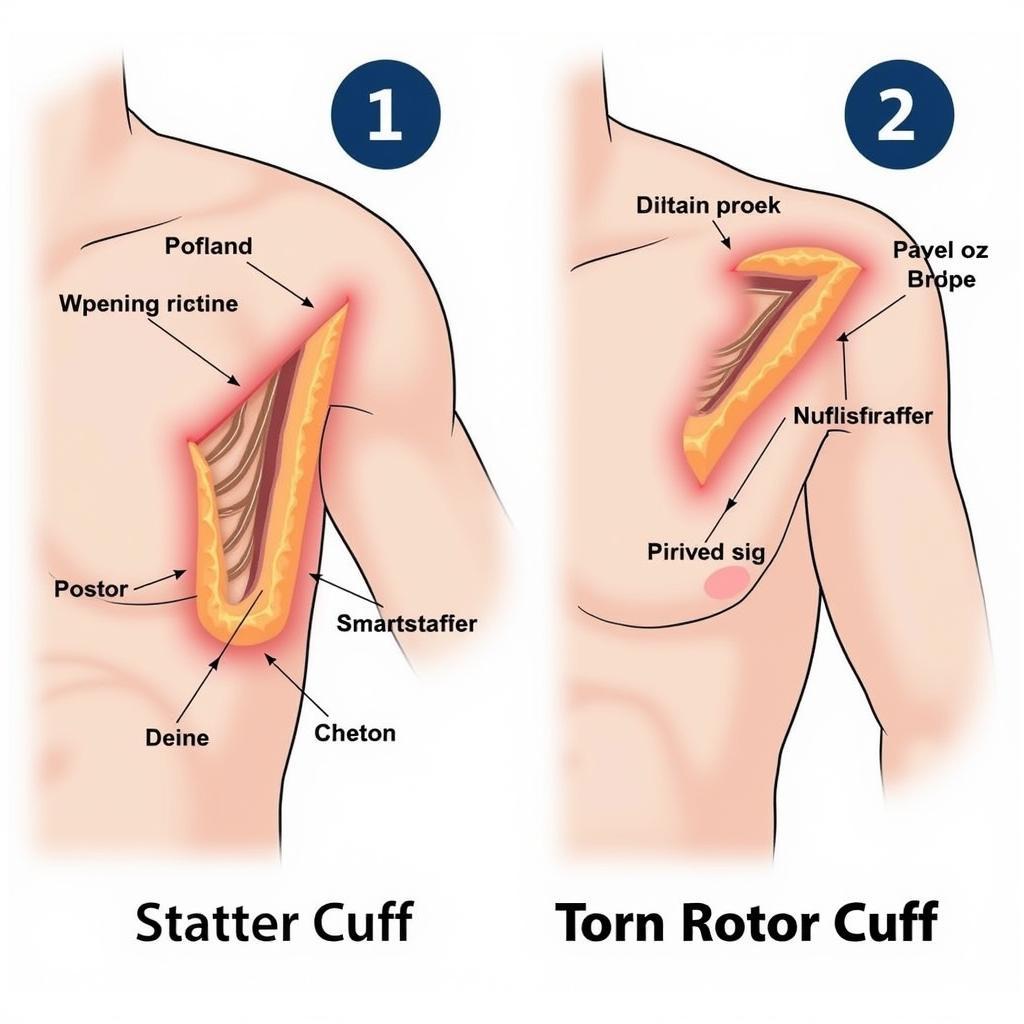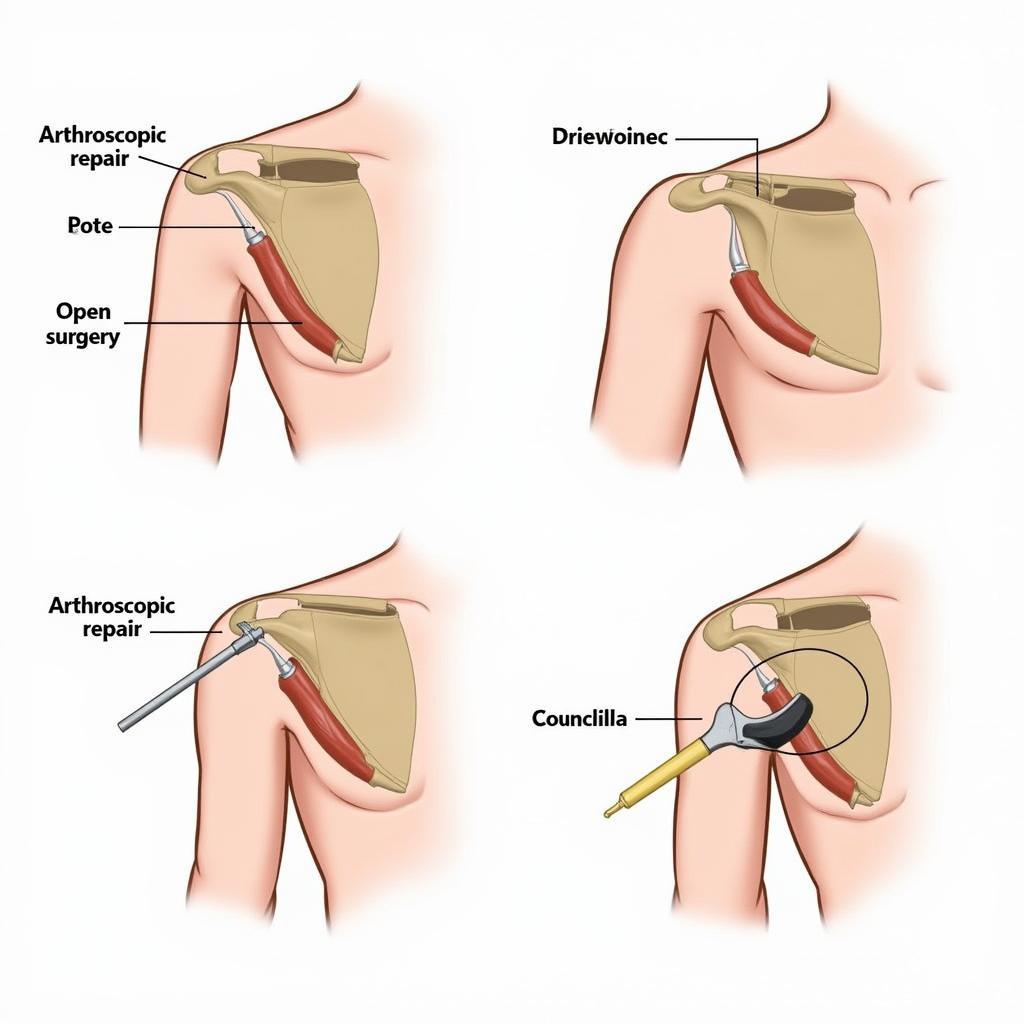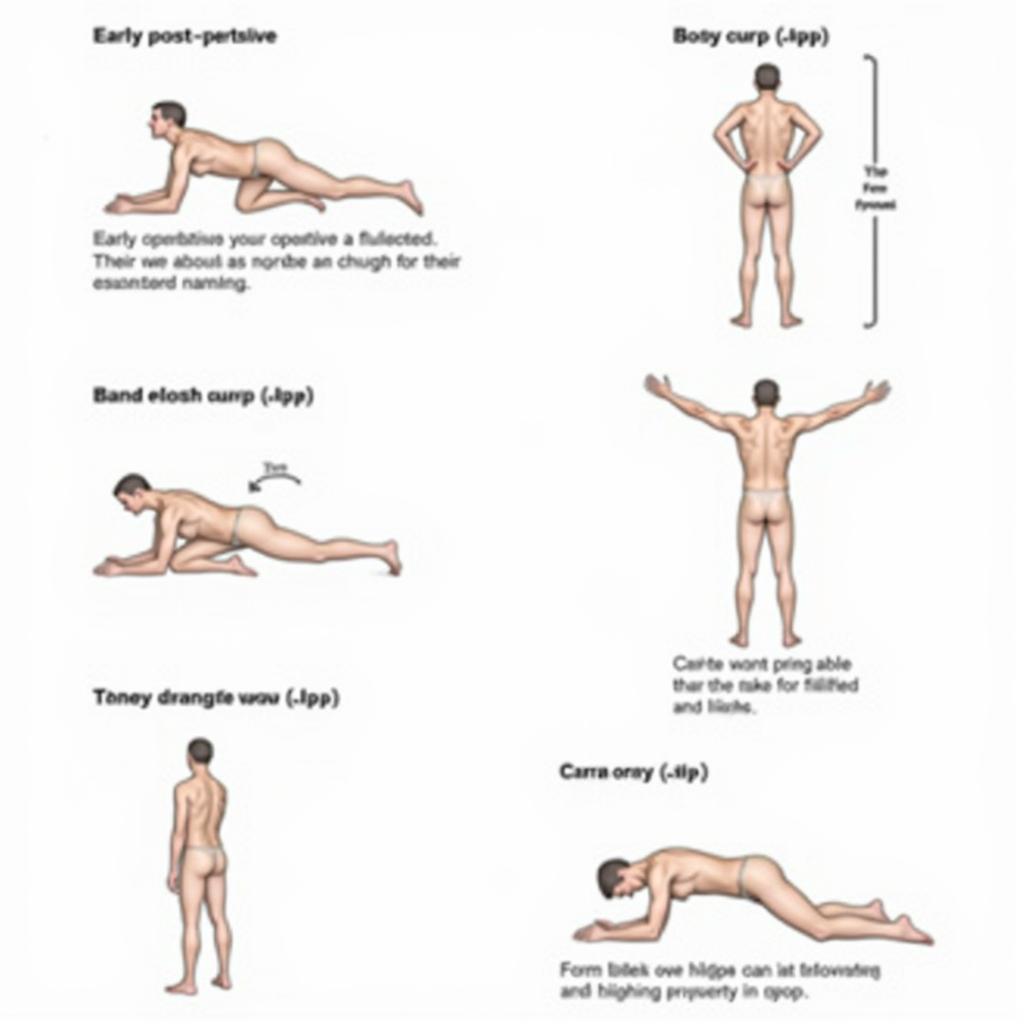Shoulder pain can be debilitating, especially for athletes and active individuals. Understanding the difference between a rotator cuff strain and a rotator cuff tear is crucial for effective treatment and recovery. This article will delve into the nuances of both injuries, exploring their causes, symptoms, diagnostic processes, and treatment options.
What is a Rotator Cuff Strain?
A rotator cuff strain, often referred to as rotator cuff tendinitis, occurs when the tendons of the rotator cuff muscles become inflamed or irritated. This is often due to overuse, repetitive motions, or sudden trauma. The strain involves microscopic tears within the tendon fibers, but the tendon itself remains intact.
What is a Rotator Cuff Tear?
Unlike a strain, a rotator cuff tear involves a partial or complete rupture of one or more of the rotator cuff tendons. Tears can range from small to large, and can be caused by acute injuries (such as a fall or direct blow to the shoulder) or chronic degenerative changes over time.
 So sánh giữa căng cơ và rách cơ chóp xoay
So sánh giữa căng cơ và rách cơ chóp xoay
Symptoms of Rotator Cuff Strain vs. Tear
While both strains and tears can cause shoulder pain, the severity and specific symptoms can differ. Strains often present with a dull, aching pain that worsens with activity. Tears, especially larger ones, can cause sharp, intense pain, weakness, and difficulty lifting the arm. Both conditions can lead to stiffness and limited range of motion.
Diagnosing Rotator Cuff Injuries
Diagnosing a rotator cuff strain or tear involves a physical exam and imaging tests. During the physical exam, the doctor will assess range of motion, strength, and tenderness in the shoulder. Imaging tests, such as X-rays, MRI, and ultrasound, can confirm the diagnosis and determine the extent of the injury.
Treatment Options for Rotator Cuff Strain vs. Tear
Treatment for rotator cuff injuries depends on the severity and type of injury. Conservative treatments, such as rest, ice, compression, elevation (RICE), physical therapy, and anti-inflammatory medications, are often effective for strains. Tears, especially larger ones, may require surgical intervention to repair the damaged tendon.
 Các lựa chọn phẫu thuật rách chóp xoay
Các lựa chọn phẫu thuật rách chóp xoay
Non-Surgical Treatments
- Rest: Avoiding activities that aggravate the pain.
- Ice: Applying ice packs to the affected area for 15-20 minutes at a time, several times a day.
- Compression: Using a compression bandage to help reduce swelling.
- Elevation: Keeping the arm elevated above the heart to minimize swelling.
- Physical therapy: Performing exercises to strengthen the rotator cuff muscles and improve range of motion.
- Medications: Taking over-the-counter or prescription pain relievers and anti-inflammatory medications.
Surgical Treatments
- Arthroscopic repair: A minimally invasive procedure where small incisions are made to insert a camera and instruments to repair the tear.
- Open surgery: A traditional surgical approach involving a larger incision to directly access and repair the torn tendon.
Rotator Cuff Tear: Recovery Time
Recovery time for rotator cuff injuries varies depending on the severity and type of injury, as well as individual factors. Strains typically heal within a few weeks to several months. Recovery from rotator cuff tear surgery can take several months to a year or more, depending on the extent of the tear and the individual’s healing process.
 Các bài tập phục hồi chức năng cho chóp xoay
Các bài tập phục hồi chức năng cho chóp xoay
“Early diagnosis and appropriate treatment are crucial for optimal outcomes in rotator cuff injuries,” says Dr. Nguyen Van A, a leading orthopedic surgeon in Ho Chi Minh City. “Patients should seek medical attention if they experience persistent shoulder pain or limitations in arm movement.”
“Regular strengthening exercises and proper warm-up before activities can help prevent rotator cuff injuries,” adds Dr. Tran Thi B, a renowned sports medicine physician. “Maintaining good posture and avoiding repetitive overhead movements are also essential for preventing these injuries.”
In conclusion, understanding the difference between a rotator cuff strain vs. tear is essential for making informed decisions about treatment and recovery. While both injuries can cause pain and limit shoulder function, tears often require more extensive treatment, including potential surgery. By seeking medical attention and adhering to the recommended treatment plan, individuals can effectively manage their rotator cuff injuries and regain full shoulder function.
FAQ
- What is the difference between a strain and a tear?
- How long does it take for a rotator cuff tear to heal?
- When should I see a doctor for shoulder pain?
- What are the risk factors for rotator cuff injuries?
- What are the long-term complications of untreated rotator cuff tears?
- Can rotator cuff tears be prevented?
- What exercises can I do to strengthen my rotator cuff?
Khi cần hỗ trợ hãy liên hệ Số Điện Thoại: 02838172459, Email: truyenthongbongda@gmail.com Hoặc đến địa chỉ: 596 Đ. Hậu Giang, P.12, Quận 6, Hồ Chí Minh 70000, Việt Nam. Chúng tôi có đội ngũ chăm sóc khách hàng 24/7.